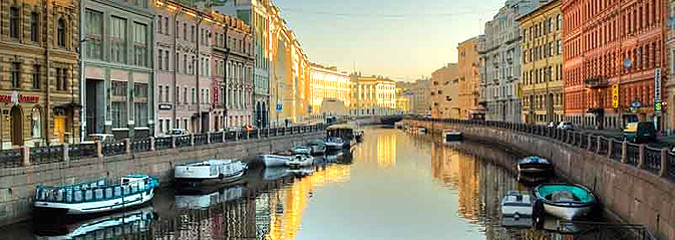One of the world’s most beautiful cities, St. Petersburg has all the ingredients for an unforgettable travel experience: high art, lavish architecture, wild nightlife, an extraordinary history and rich cultural traditions that have inspired and nurtured some of the modern world’s greatest literature, music, and visual art. From the mysterious twilight of the White Nights to world-beating opera and ballet productions on magical winter evenings, St. Petersburg charms and entices in every season.

Saint Petersburg is often described as the most Western city of Russia. Among cities of the world with over one million people, Saint Petersburg is the northernmost. The Historic Centre of Saint Petersburg and Related Groups of Monuments constitute a UNESCO World Heritage Site. Saint Petersburg is also home to The Hermitage, the largest art museum in the entire world.[13] Russia’ s political and cultural centre for 200 years, the city is sometimes referred to in Russia as the Northern Capital. Over its history it has also been referenced as " the Venice of the north" and the " Northern Palmyra". A large number of foreign consulates, international corporations, banks and other businesses are located in Saint Petersburg.
The area of Saint Petersburg city proper is 605.8 km2 (233.9 sq mi). The area of the federal subject is 1,439 km2 (556 sq mi), which contains Saint Petersburg proper (consisting of eighty-one okrugs), nine municipal towns — (Kolpino, Krasnoye Selo, Kronstadt, Lomonosov, Pavlovsk, Petergof, Pushkin, Sestroretsk, Zelenogorsk) — and twenty-one municipal settlements.

St. Petersburg is a city of haunting magnificence, an imperial capital that seems to have been built as a monument to its own passing. Less than three centuries have passed since Peter the Great began building his grand city on the Gulf of Finland, but it is difficult to visit its vast, crystalline squares and palaces without feeling the enormity of the gulf that separates that time from our own. All of which, of course, makes St. Petersburg more evocative of Russia’s past than any place except perhaps the Moscow Kremlin. This impression is only deepened by a more familiar acquaintance. The enigmatic homeliness of Peter’s cottage and the city’s placid canals may contrast with the brooding grandeur of the Winter Palace, but they share with it a graceful stillness that is difficult to forget.











